In 2018, NIWA, in collaboration with Nelson City Council, Greater Wellington Regional Council (GWRC), Auckland Council (AC) and Northland Regional Council (NRC) developed a series of instructional videos covering:
- An overview of the Stream Health Monitoring and Assessment Kit (SHMAK), including its components and its core applications for water monitoring,
- Correct procedures for carrying out the measurements for each component of the SHMAK, including health and safety around rivers and streams, collection of water samples, measurement of visual water clarity, observations of periphyton cover, collection of macroinvertebrate samples, and assessments of stream habitat quality.
The videos were funded by an Envirolink Large Advice Grant (1911-NLCC103) with additional funding provided by Greater Wellington Regional Council (GWRC) and Wellington City Council (WCC).
SHMAK videos
-
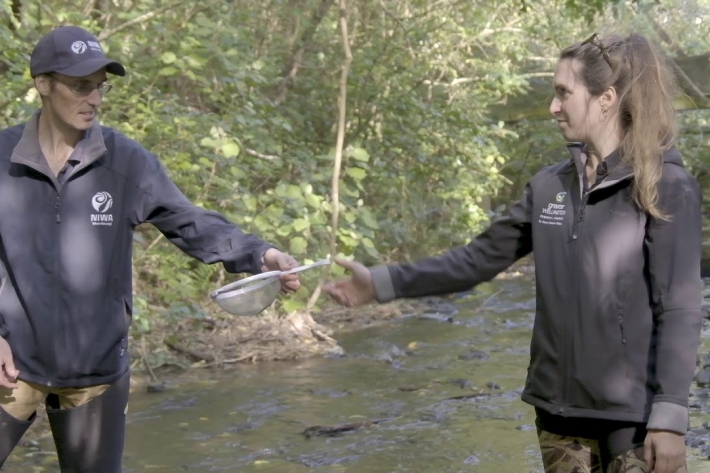
SHMAK stream life – collecting benthic macroinvertebrates using the Stone Method
If you don’t have a net, you can collect stones from the streambed and collect the invertebrates that are clinging to the stones. -
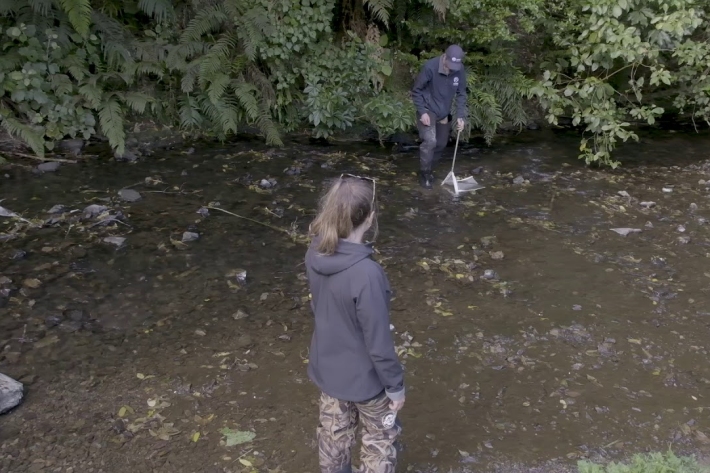
SHMAK stream life – collecting benthic macroinvertebrates using the Kick-Net Method
Use a net & the kick-net method to collect a greater range of benthic macroinvertebrates and more accurately assess the diversity of the community. -
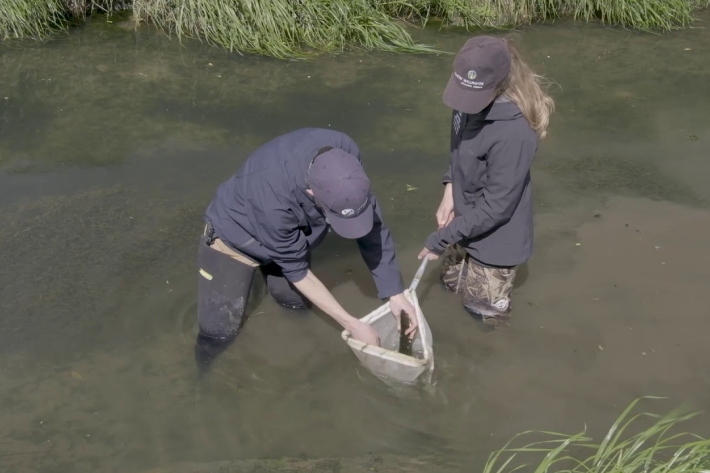
SHMAK stream life – collecting benthic macroinvertebrates in muddy-bottom streams
If your stream has a muddy-bottom or soft-bottom (made of silt or mud), you need to use a different method than if your stream has a stony-bottom. -
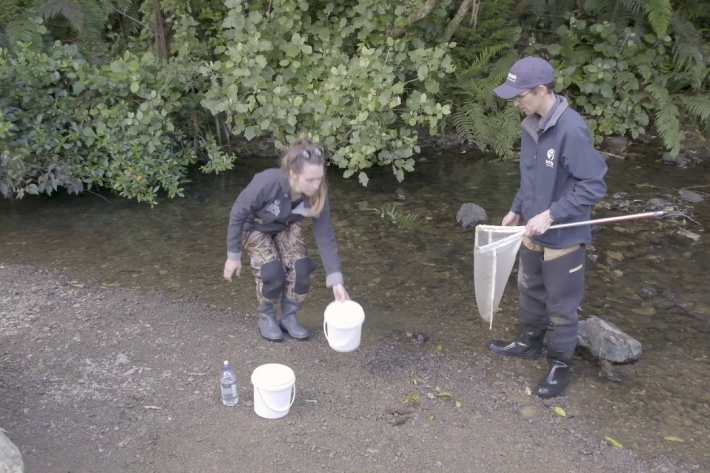
SHMAK stream life – how to get your benthic macroinvertebrate sample ready for sorting
Before you look at what animals you have collected, follow these methods to clear away debris (stones, sand, leaves, twigs) from your sample in the net. -
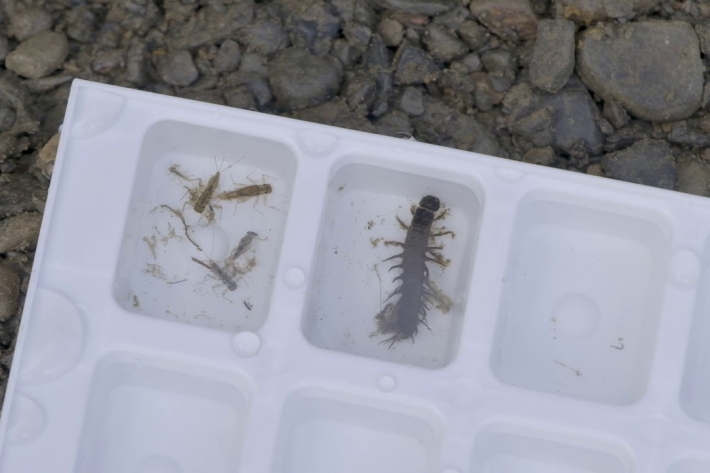
SHMAK stream life – how to sort and identify your benthic macroinvertebrate sample
Use an ice-cream tray to isolate and separate your invertebrates. The Benthic Macroinvertebrate Field Guide helps you with identification. -
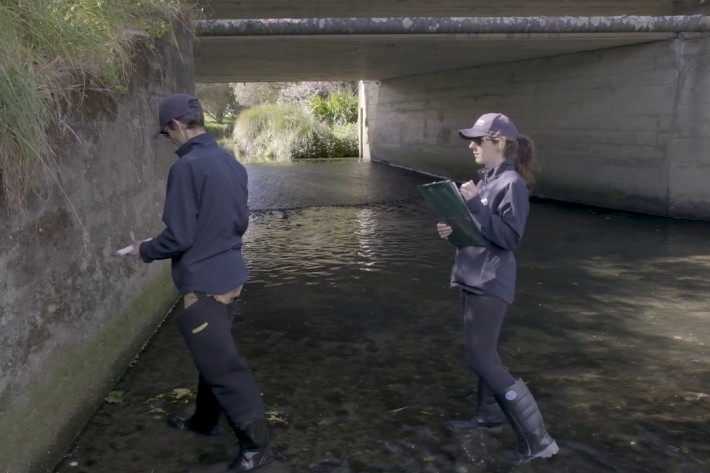
SHMAK habitat – streambed composition
Two methods for describing streambed composition: the visual assessment method is quicker while the Wolman walk is more accurate. -
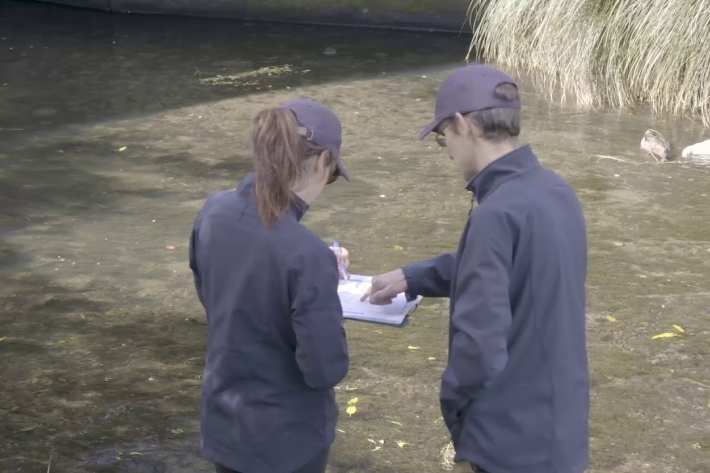
SHMAK habitat – visual habitat assessment
The SHMAK visual habitat assessment gives your stream a score that you can use to assess changes over time or compare streams. -
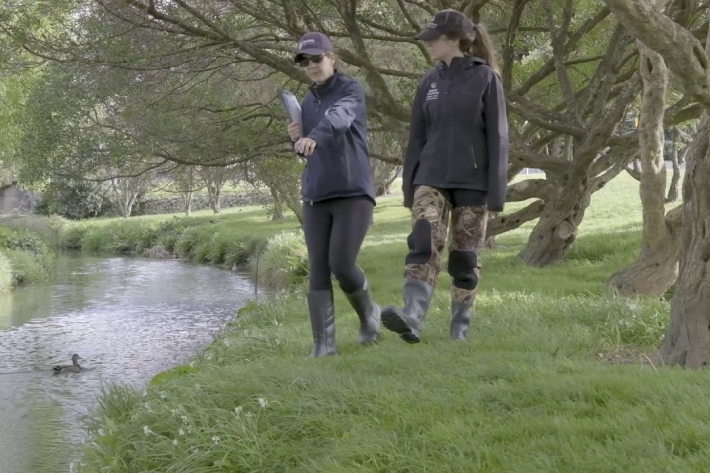
SHMAK habitat - rubbish
The SHMAK method for rubbish involves collecting and identifying all the rubbish (litter) in the stream and on the stream banks.
